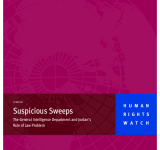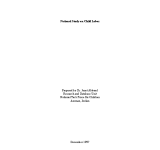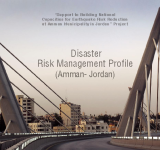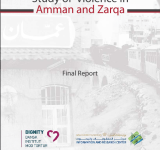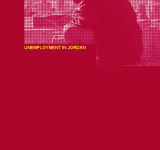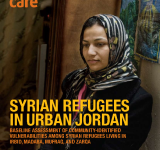Amman
This report analyzes the nature of child labor in Jordan. Child labor is defined as “the active participation of any child less than 16 years of age in any economic activity;; regardless of the type of work;; the employer;; the nature of the job;; or the activity.” This report examines the magnitude of child labor in Jordan based on the existing information and the collection of additional field data (both qualitative and quantitative) on the causes;; conditions;; and consequences of child labor. This report also aims to identify sub-populations of children most at risk to child labor;; investigate inadequacies in Jordanian laws and legislation with regards to child labor;; and examine vocational training programs and existing non-formal education programs for school drop-outs in relation to child labor. With regards to methodology;; information on child labor in Jordan was obtained through both primary and secondary sources;; including previous studies;; interviews;; and a field survey. After careful analysis;; this report makes a number of recommendations which aim to combat illegal of harmful child labor in Jordan.
This report was prepared by the General Directorate of Civil Defense and the United Nations Development Programme in 2008. It provides an overview of Jordan and its demographic;; economic;; social and cultural characteristics. In addition it presents legislation and its effectiveness;; relevant to land use management;; vulnerability to hazards and the disaster risk management arrangements in place. It concludes with the disaster risk management vision of Jordan.
يتضمن هذا التقرير النتائج الرئيسية للجولات الأربع للمسح التي تم تنفيذها خلال أشهر شباط;; أيار;; آب;; وتشرين الثاني عام 2007;; بعد أن تم دمج البيانات مع بعضها البعض بتعطي مؤشرات سنوية على مستوى عام 2007. حيث غطت الجولات المسح الأربع عينة من الأسر بلغ حجمها 53 ألف أسرة بصورة تضمن التمثيل على مستوى المملكة والأقاليم والحضر والريف;; والمحافظات. واستندت هذه العينة على الاطار الذي وفرته نتائج التعداد العام للسكان والمساكن لعام 2004. ويشمل التقرير على اﻟﺨﺼﺎﺋﺺ الديموغرافية واﻻﺟﺘﻤﺎﻋﻴﺔ واﻻﻗﺘﺼﺎدﻳﺔ ﻟﻘﻮة العمل;; بالاضافة إلى التعرف على معدلات المشاركة الإقتصادية ومتسوياتها في سوق العمل الأردني;; وكذلك قياس معدلات البطالة وأسبابها حسب المحافظات وخصائص مختلفة كالمستوى التعليمي والحالة الزواجية والعمر.
تهدف الدراسة إلى البحث في مدى انتشار العنف;; والاتجاهات والمفاهيم حول العنف في المحافظتين الأردنيتين الأكبر من حيث الكثافة السكانية: العاصمة (عمّان) والزرقاء. ولا يقتصر هذا التقرير على البحث في درجة انتشار العنف في هاتين المحافظتين وفي طبيعة العنف (بما يشمل العموامل الجسدية والنفسية والاقتصادية);; وإنما يحاول أيضاً تكوين فهم لأسباب هذا العنف من خلال تحديد القضايا المتشابكة التي تؤدي إليه وكيفية ارتباط هذه القضايا مع بعضها البعض.
This pilot study report was initiated by the European Training Foundation (ETF);; in close cooperation with the National Center for Human Resources Development (NCHRD) in Jordan;; in the framework of the ETF multiannual project Observatory Function Development in Jordan. The focus of this report is unemployment. However;; considering that unemployment information in itself should not be used or analysed in isolation from other indicators or data;; the report begins by providing an overview of the general labour market situation in Jordan. After the main data on employment by sector;; age;; gender and level of education are presented;; on the basis of the available information;; the specific cases of non-Jordanian employees and employment in the informal economy are highlighted as topics requiring special attention in the Jordanian labour market. In conclusion;; two groups of recommendations are proposed: (i) technical recommendations to main information providers for improving the quality of the information collected;; and (ii) a set of policy recommendations for tackling unemployment. These recommendations are intended to support policymakers in their commitment and willingness to adapt both the formal and informal education and training system and the whole labour market in Jordan.
This paper aims at shedding light on the labor rights in Jordan;; particularly for those who are working in the informal sector;; through identifying the factors that impede them from enjoying such rights and;; thus;; coming up with the appropriate recommendations in this area.
This report is a baseline assessment of community-identified vulnerabilities among Syrian refugees living in Amman;; Irbid;; Madaba;; Mufraq;; and Zarqa. The purpose of this report is to identify urban Syrian refugees’ current coping mechanisms and any gaps in services available to Syrian refugees in Jordan. The research methodology is both qualitative and participatory in design;; drawing from the UNHCR tool for Participatory Assessment in Operations. This report presents only the data from household interviews;; baseline assessment;; and the follow-up focus groups conducted with community members. The number of households surveyed was 240;; with a total number of 1;;476 household members and 89 focus group participants representing 534 household members. The report proposed general recommendations and interventions to deal with the main highlighted challenges (cash assistance;; strengthening community links;; vocational training;; physical activities ...etc).
